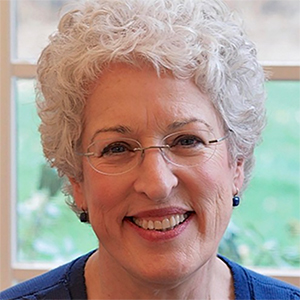The Politics of the Food Bowl: Are You Feeding Your Pet Right?
Published in Cats & Dogs News
Few topics stir up more passionate debate at the dog park or veterinary office than what to put in your pet’s bowl. Raw food, grain-free, high-protein, limited ingredient, home-cooked, kibble-only, fresh-delivered—every option claims to be the healthiest, most natural, and most loving choice. But when it comes to feeding cats and dogs, nutrition has become more than a science. It’s a battleground of trends, marketing, misinformation, and very real health stakes.
More than just kibble
For decades, feeding your pet was relatively straightforward. Most people chose a brand of dry kibble, perhaps added some canned food, and called it a day. But in recent years, a wave of boutique and alternative diets has changed how pet owners think about nutrition.
"People want to feed their pets like family," said Dr. Helena Gupta, a veterinary nutritionist in New York. "And that’s a good instinct—if you follow actual science, not fad diets."
Companies have capitalized on that instinct. Pet food aisles now resemble gourmet grocery stores, with labels boasting cage-free chicken, wild-caught salmon, and human-grade ingredients. Subscription services offer refrigerated meals shipped to your door with names like “Teddy’s Turkey Stew” or “Salmon & Spinach Delight.”
While some of these foods are genuinely well-formulated, many others rely on buzzwords over substance.
The raw food revolution—and its risks
Among the most controversial trends is the raw food movement, which argues that commercial pet food is overprocessed and that animals thrive best on uncooked meat, bones, and organs—much like their wild ancestors.
Raw feeders often cite shinier coats, cleaner teeth, and fewer allergies. But veterinarians remain divided, and major organizations like the American Veterinary Medical Association caution against raw diets due to bacterial risks to both pets and humans.
"There’s a big difference between what a wolf can digest in the wild and what a domestic Yorkie should eat in your kitchen," said Gupta. "We see nutritional imbalances, and serious infections—especially in immunocompromised households."
Still, raw proponents argue that handling pet food safely is no different than preparing human meals. And for those who commit to the diet with the guidance of a veterinary nutritionist, raw feeding can be done responsibly. But it’s not a casual decision—and not something to undertake based on internet testimonials alone.
Grain-free and guilt
Another flashpoint in the food debate is grain-free diets. Once marketed as a cure-all for allergies and digestive problems, these formulas surged in popularity over the past decade. But in 2018, the U.S. Food and Drug Administration began investigating a possible link between grain-free diets and a form of heart disease called canine dilated cardiomyopathy (DCM).
The findings sparked panic and pushback, with some owners abandoning grain-free overnight and others insisting it was a smear campaign against small pet food brands. To date, no definitive causal link has been established—but the warning served as a reminder that “natural” doesn’t always mean better, and that nutrient balance matters more than marketing claims.
Homemade isn’t always healthier
With trust in commercial food shaken, many owners have turned to home-cooked meals. But while the motivation is understandable, the execution can be dangerous. Studies have found that the majority of home-prepared pet diets found online or in books are deficient in one or more essential nutrients.
“A dog’s needs are not the same as a human’s,” said Gupta. “Feeding chicken and rice every day might seem gentle, but it lacks critical vitamins, calcium, and fatty acids.”
Cats are even more sensitive. As obligate carnivores, they require nutrients like taurine and arachidonic acid, which can only come from animal sources. A homemade vegan diet for a cat can be lethal.
That doesn’t mean home-cooked diets are off the table entirely—but they should be formulated under the guidance of a board-certified veterinary nutritionist and supplemented correctly.
The human mirror
At the heart of the food bowl debate is a deeper truth: how we feed our pets often mirrors how we think about our own diets, values, and even ethics. Pet food choices can be expressions of privilege, identity, environmental concern, or cultural tradition.
Some owners pursue vegetarian or vegan diets for their pets out of a desire to reduce animal suffering, while others insist their animals should eat only “ancestral” diets. Some worry about food allergies or intolerances, even when no symptoms are present. And many just want to feel like they’re doing the best they can for their companions.
"Feeding pets has become emotional," Gupta said. "And companies know how to tap into that."
So… what should you feed your pet?
Despite the noise, most veterinarians agree on a few core principles. Choose a diet that is AAFCO-compliant, meaning it meets established nutritional standards. Look for brands with robust quality control and veterinary oversight. Monitor your pet’s health, coat, weight, and energy level. And consult your vet before making major changes.
In the end, feeding your pet isn’t about perfection. It’s about balance, awareness, and a little humility. The politics of the food bowl will continue to evolve—but your pet doesn’t need the trendiest label or the most expensive delivery service. They just need nourishment, stability, and your love.
And maybe, once in a while, a bite of chicken from your plate—if your vet says it’s okay.
========
This article was created, in part, utilizing AI tools.








Comments